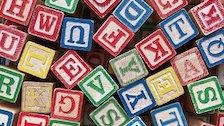
You can watch a recording of the webinar in which we discussed the mathematical thinking which can be prompted by these activities.
You may also like to take a look at our Proof Through Words - Geometry feature which offers similar experiences but in a numerical context.
Why dialogue matters in primary proof
Strike it out
Use your addition and subtraction skills, combined with some strategic thinking, to beat your partner at this game.
Even and odd
This activity is best done with a whole class or in a large group. Can you match the cards? What happens when you add pairs of the numbers together?

Two numbers under the microscope
This investigates one particular property of number by looking closely at an example of adding two odd numbers together.
Next-door numbers
Unravelling sequences
An easy way to multiply by 10?
Do you agree with Badger's statements? Is Badger's reasoning 'watertight'? Why or why not?
Mathdoku
Take three numbers
What happens when you add three numbers together? Will your answer be odd or even? How do you know?
Neighbourly addition
I added together some of my neighbours' house numbers. Can you explain the patterns I noticed?

